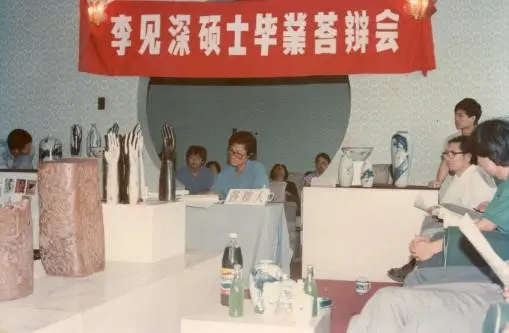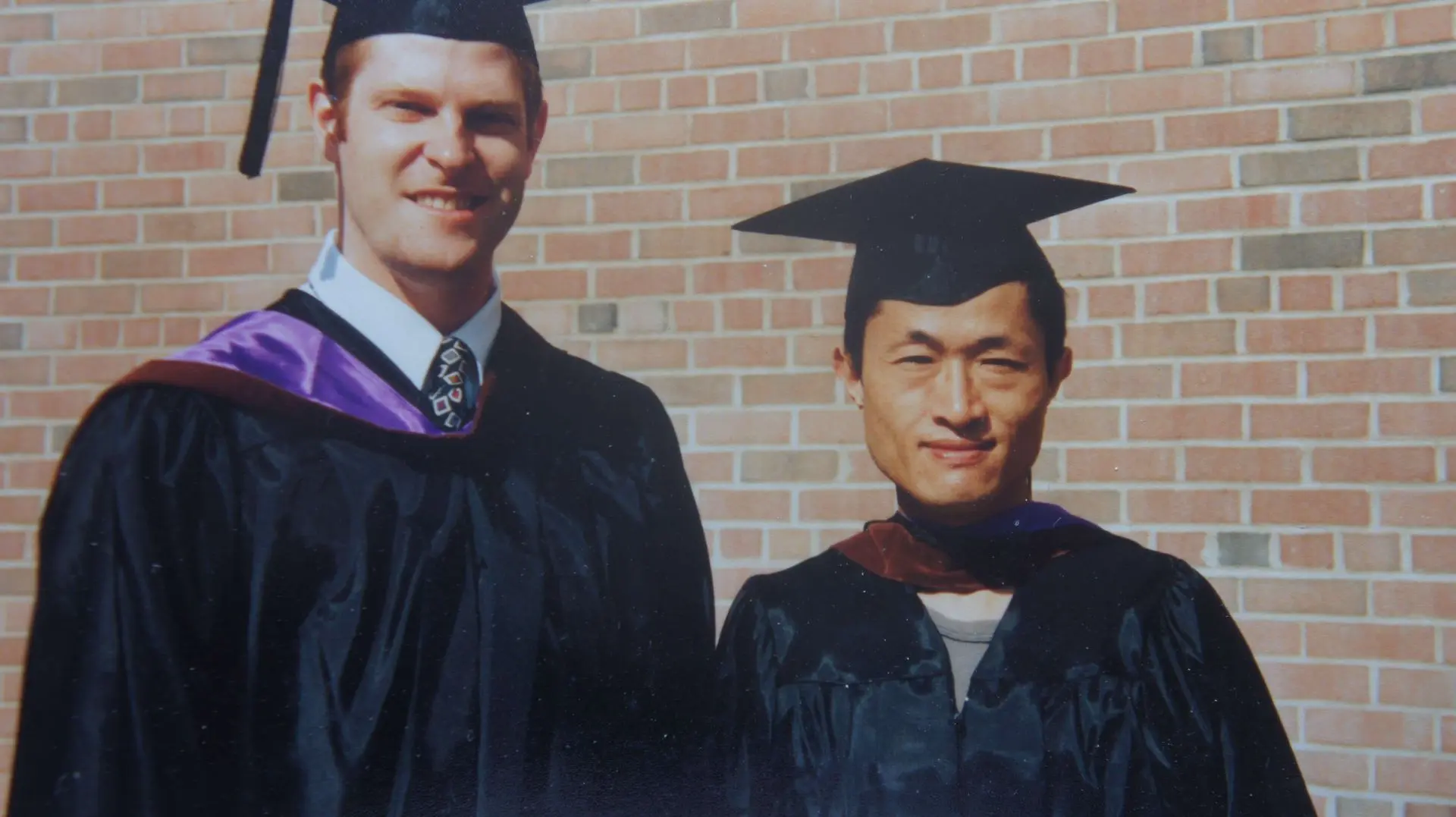Regarding the works of Li Jackson, I do not know when he first developed an interest in ceramics, but I have heard that he studied at Jingdezhen Ceramic University and later graduated from the renowned Alfred University in the United States.
His works and mine (Noriyoshi Yorikami) seem to express themselves in completely opposite ways. In his works, there is a clear resistance to conventional ceramics. He feels dissatisfied with the mass-produced and freshness-lacking ceramics from Jingdezhen, a production center of porcelain, and rejects the creation of perfectly shaped, standardized ceramics. Instead, he deliberately distorts wheel-thrown vessels, allowing them to follow the natural characteristics and tendencies of the clay itself. Moreover, he brings to light discarded ceramic fragments excavated from ancient kiln sites in Jingdezhen—pieces considered useless in their time—and even produces works of a similar nature himself. This is something most potters would never attempt. However, by expressing the “negative aspects” of ceramics, he reveals what might be considered its true form.
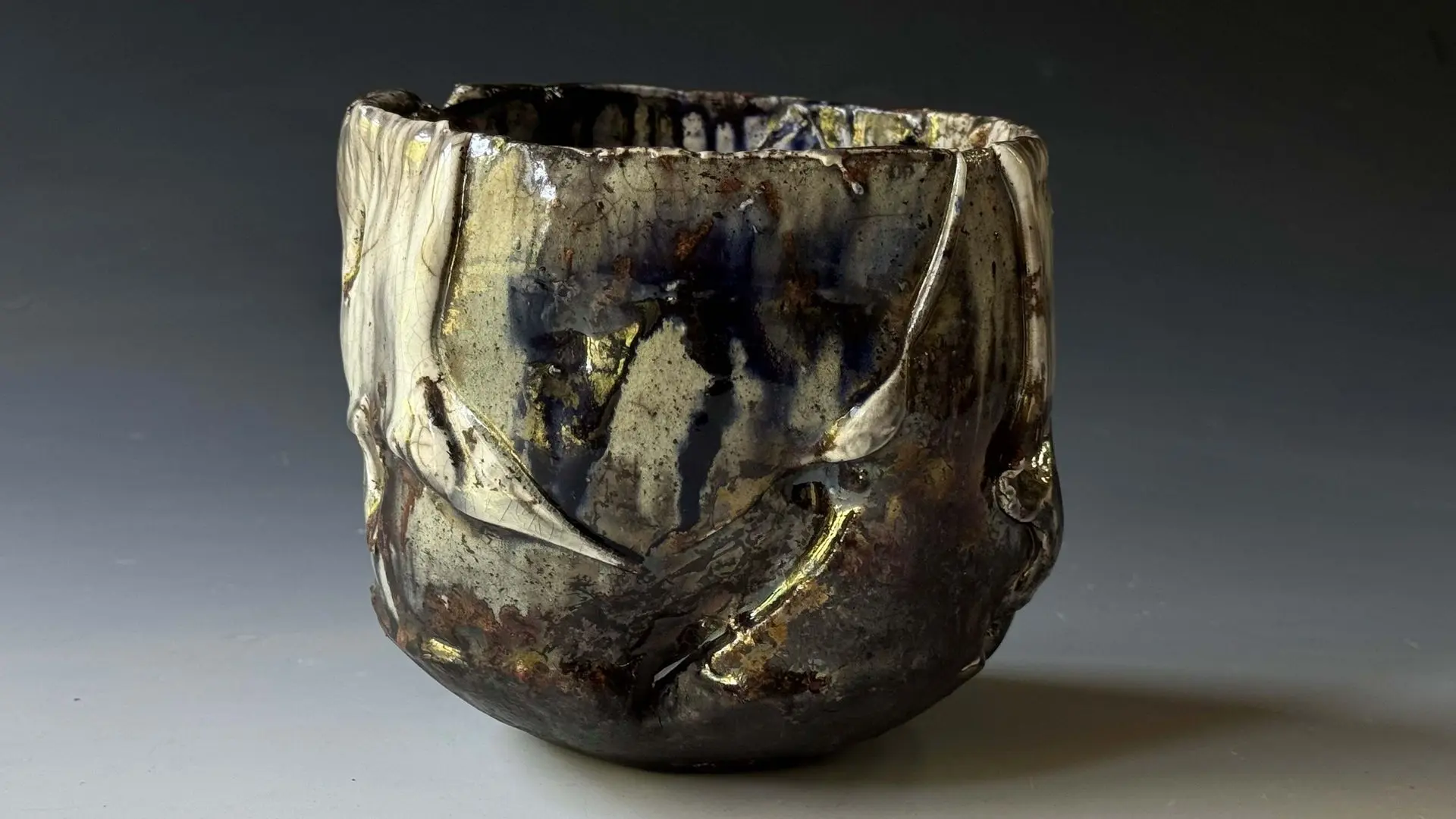
《新民窑·钵器》乐烧
2018年 14CM×14CM×12CM
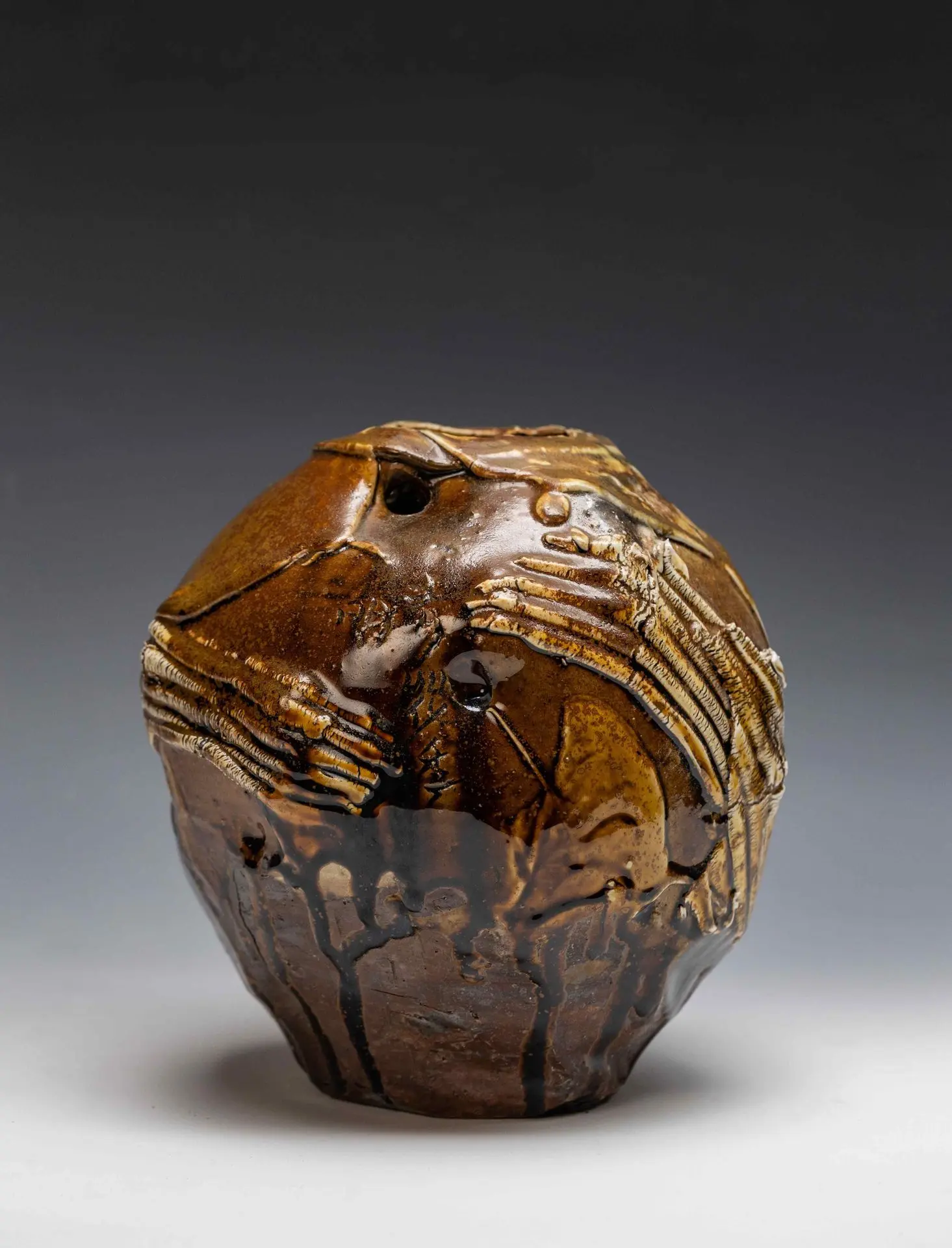
《新民窑·花器》柴烧
2023年 25CM×25CM×25CM
His experience in America is also significant. Since the United States originally had no ceramic tradition, their expressions were not centered on ceramic vessels as functional objects, but rather on clay as a material of sculptural value. To us, as people of the East, ceramics in this context became newly refreshing. I myself felt the same when I attended a North American ceramics exhibition held in Kyoto in 1970. Seeing works by artists such as Vito Voulkos, James Melchert, and Marilyn Levine had a strong impact on me, opening my eyes to the possibilities of ceramics. Perhaps Jackson experienced a similar kind of shock when he encountered Jingdezhen ceramics.
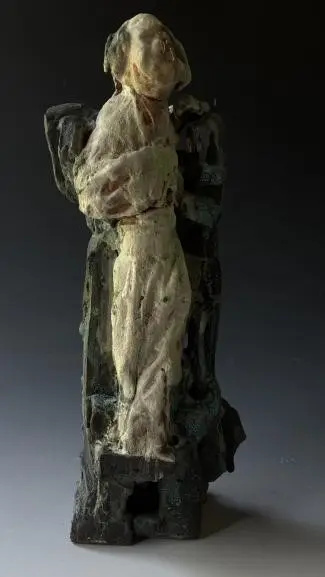
无题
2015
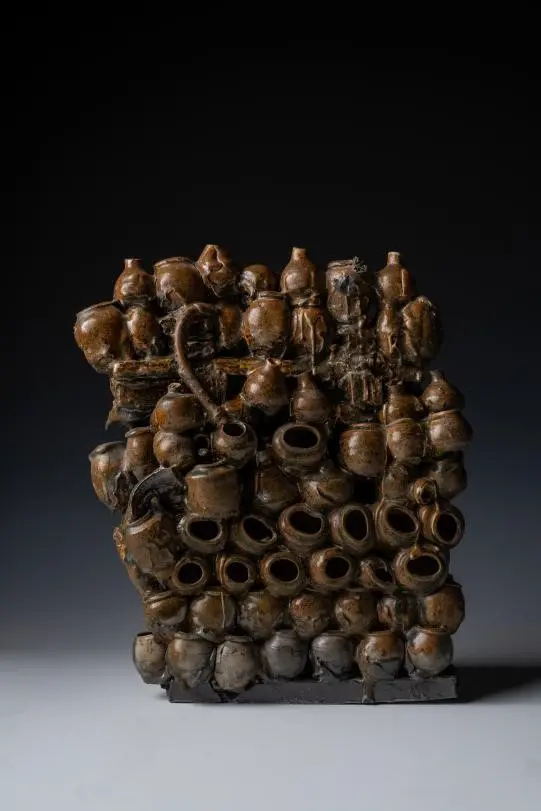
《罐墙之一》陶瓷
2015
34CM×13CM×40CM
As for myself, although I was born into a family of potters, I never touched clay in my early life. I only began studying ceramics at the age of 25, and thus I have always felt at a disadvantage. Even in vessel making, even if I were to rely on the potter’s wheel, I thought I could never match the skills of younger artists.
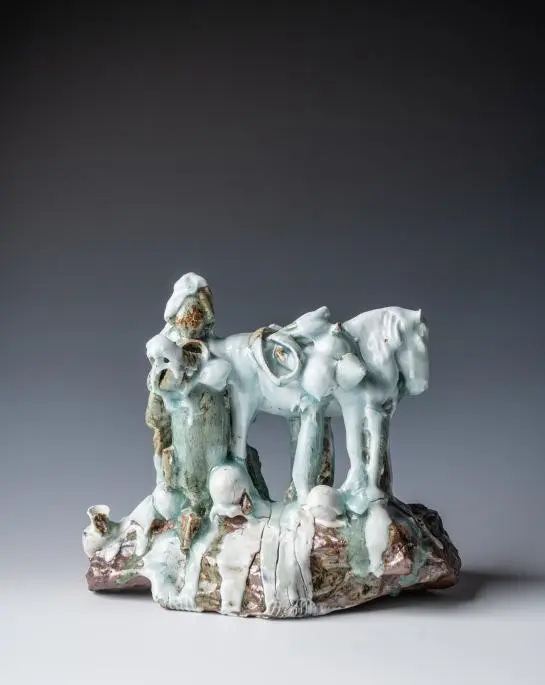
《远去》
陶瓷 2019年35CM×18CM×30CM
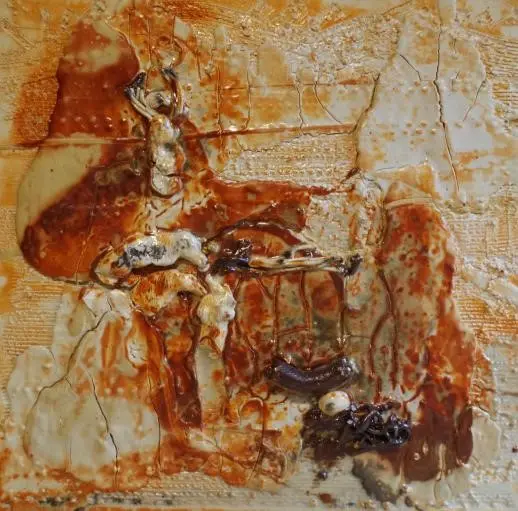
《被遗忘的》
陶瓷 2022年 51.5CM×51.5CM
Yet for the following five years, I was unable to create any works at all. Only in the fifth year did I finally begin with simple combinations of forms. One of the things my teacher taught me was: “Do not flatter the texture of clay”—in other words, do not fall into tea ceramics, or the world of wabi-sabi. Therefore, at first, even when working by hand, I avoided leaving traces, and in firing I rejected the idea of “firing flavor.”
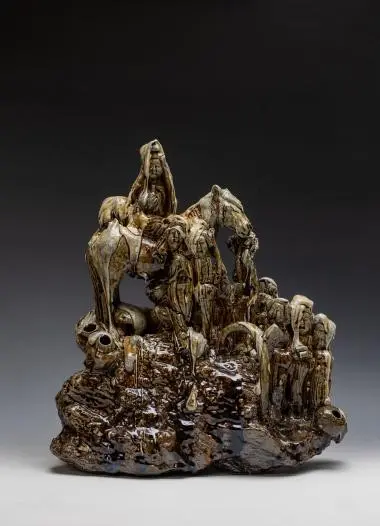
《小寒》 柴烧2023年
42CM×15CM×46CM
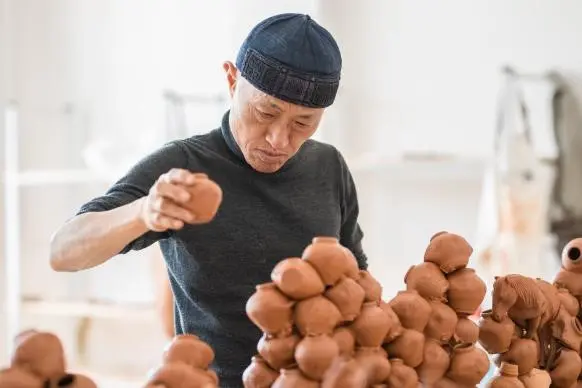
Yet for the following five years, I was unable to create any works at all. Only in the fifth year did I finally begin with simple combinations of forms. One of the things my teacher taught me was: “Do not flatter the texture of clay”—in other words, do not fall into tea ceramics, or the world of wabi-sabi. Therefore, at first, even when working by hand, I avoided leaving traces, and in firing I rejected the idea of “firing flavor.” By making form clear and distinct, I established black ceramics as the foundation of my work. But as I gradually gained confidence, I began to free myself from these restrictions, creating the Re-Creation series, which incorporated kiln variations, breakage, and other effects.
From what I have said, there is one common point between Jackson and myself: our works are not easily accepted by the stereotypical people who “like ceramics.” This is because our works are not the kind of ceramics they imagine. And, fully aware of this, neither of us has tried to change our style.
